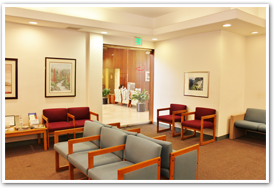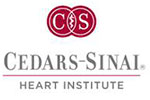Cardiac Catheterization is a general term used for procedures which use small tubes inserted in various heart compartments in order to diagnose and treat a variety of cardiac and pulmonary diseases. While the particulars of the procedure recommended by your doctor may vary, certain basic concepts remain the same. The procedure begins by the placement of a small tube (called a sheath) in a large artery or vein in the body (most commonly found in the groin, the wrist, or the neck). This is done under local anesthesia, patients are not generally "put to sleep" for this.
Through this sheath, your doctor will pass various other small tubes (called catheters) in order to diagnose the condition he or she may be suspicious of. Most commonly dye is injected into the arteries of the heart under X-ray guidance to look for blockages, this is called an angiogram. If your doctor diagnoses a blockage, they may recommend an adjunct procedure, usually perfomed at the same time, called an angioplasty--this refers to the placement of a balloon or a stent to relieve the blockage. For more information about this procedure, please see the excellent patient information page on the American College of Cardiology's Cardiosmart Web Page.
We are conveniently located in West Hills, CA


If you are scheduled for a cardiac catheterization, please reference our "Pre-operative Instruction Page". Cardiac catheterization is often performed as an outpatient, but if an angioplasty is necessary, critical disease is identified, or complications occur, you may be required to stay overnight.







